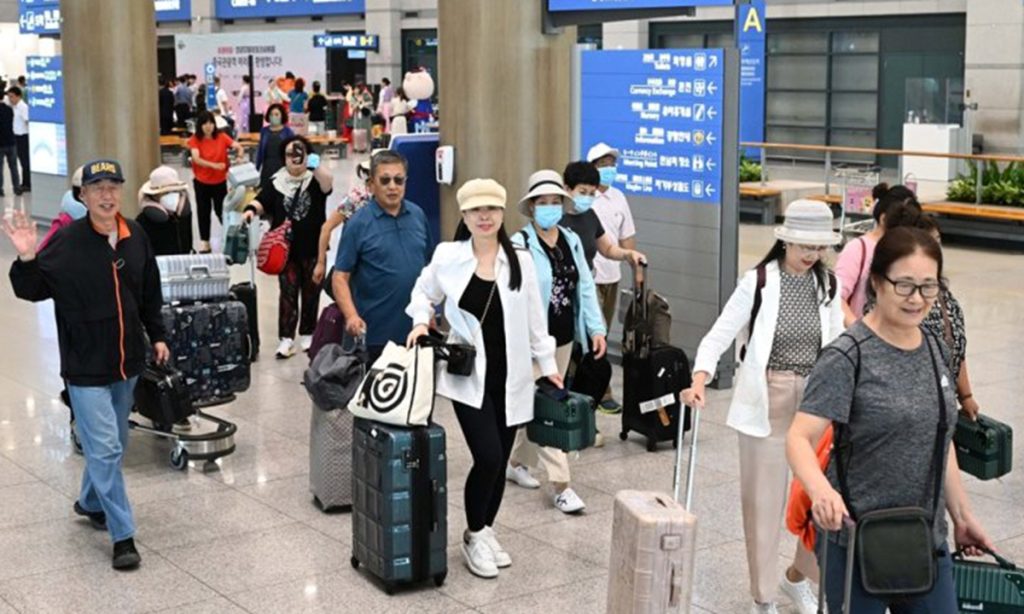Incheon airport seeks to bring back Chinese air travelers

Incheon International Airport Corp. (IIAC), the operator of Incheon International Airport, seeks to recover the rate of Chinese air passengers to 90 percent of pre-pandemic levels by 2024.
"The airport is seeing a continuous recovery in travel demands, reaching a total of 35 million international passengers by August, which is a 73.3-percent recovery from the pre-COVID levels … With China's lifting of group tour bans in August, we expect to see further recovery in inbound tourism," Kim Chang-kyu, executive director of IIAC's Public Relations Group, said during a media briefing in Incheon.
The outlook comes as the airport saw a mere 23-percent post-pandemic recovery in the number of passengers from China, which took the airport's largest portion of 19.1 percent before the COVID-19 pandemic in 2019. The figure is significantly lower than those of the Americas (99 percent), Japan (85 percent) and Southeast Asia (83 percent), Kim said.
As Chinese demand for travel to Korea grows, that of neighboring Japan is stagnating following growing negative sentiment over the release of radioactive wastewater from Fukushima's crippled nuclear power plant. IIAC thus plans to target marketing activities to those aged in their 20s and 30s, which account for the largest portion of Chinese tourists visiting Korea.
The IIAC plans to collaborate with regional tourism organizations to invite Chinese passengers to K-pop concerts in September and run promotional events on social media in association with airlines, duty-free stores and China's online travel agencies to attract young travelers.
In November, the company will also participate in China International Travel Mart (CITM), which is China's largest tourism exhibition in the city of Kunming jointly organized by its Ministry of Culture and Tourism and Civil Aviation Administration.
The airport will also welcome Chinese travelers with messages on digital signboards and carousels at arrival halls and offer welcome gifts at an event booth jointly operated with the Visit Korea Committee during the upcoming holiday season at the end of September.
With the influx of tourists during China's largest holidays combining the Mid-Autumn Festival and National Day, from Sept. 29 and Oct. 6, the operator expects to see over a million international passengers over Korea's Chuseok holiday.
The figure is a 75 percent recovery of Chinese passengers and 90 percent of all international passengers compared to 2019 and nearly a threefold jump from last year's 460,217.
By the end of 2024, IIAC expects to see 12 million passengers a year on Korea-China routes, which is a 90 percent recovery from pre-pandemic levels of 2019.
Meanwhile, IIAC aims to repair and renovate Terminal 1 from next April to June 2033 with a 1.02 trillion won ($767 million) budget. Terminal 1 cost around 2.4 trillion won to construct when it was completed in January 2000.
The airport's Terminal 1 has seen numerous problems such as water leaks from decrepit facilities and its safety standards in fire and earthquake prevention equipment are from the 1990s and fall short of the present standards, Kim said.
International airports such as Changi Airport (Singapore), Heathrow Airport (U.K.) and Charles de Gaulle Airport (France) have done similar repair jobs 25 years after construction, according to the company.
To minimize passenger inconvenience, the airlines currently running from Terminal 1 will be temporarily reallocated to Terminal 2 during renovations.